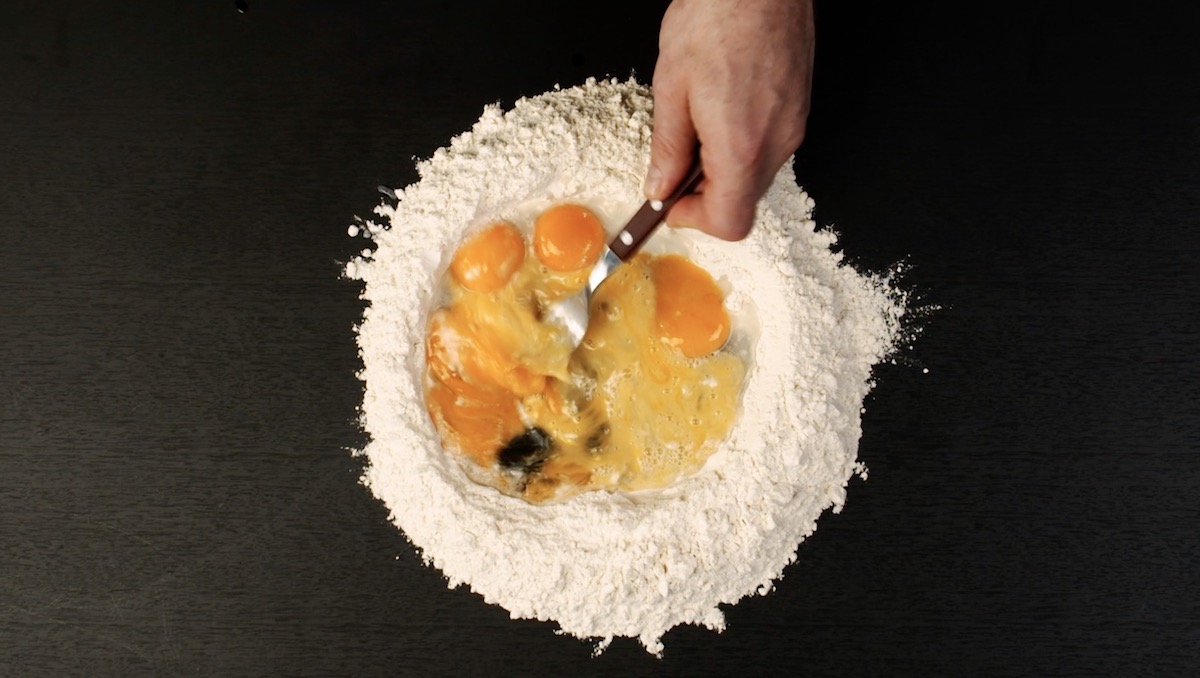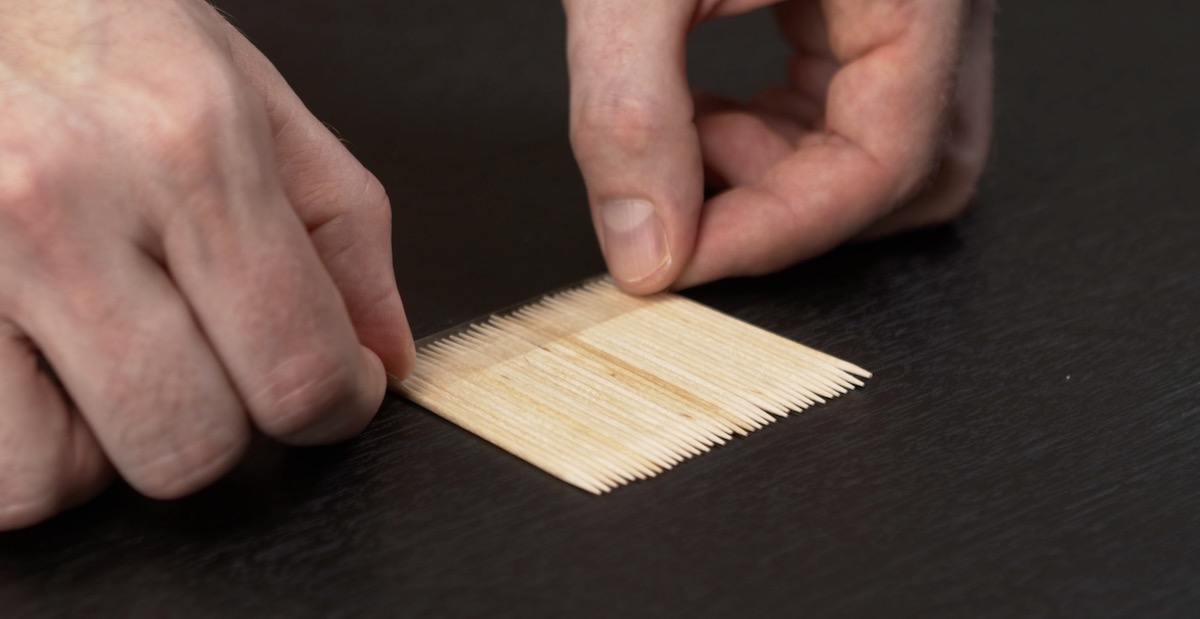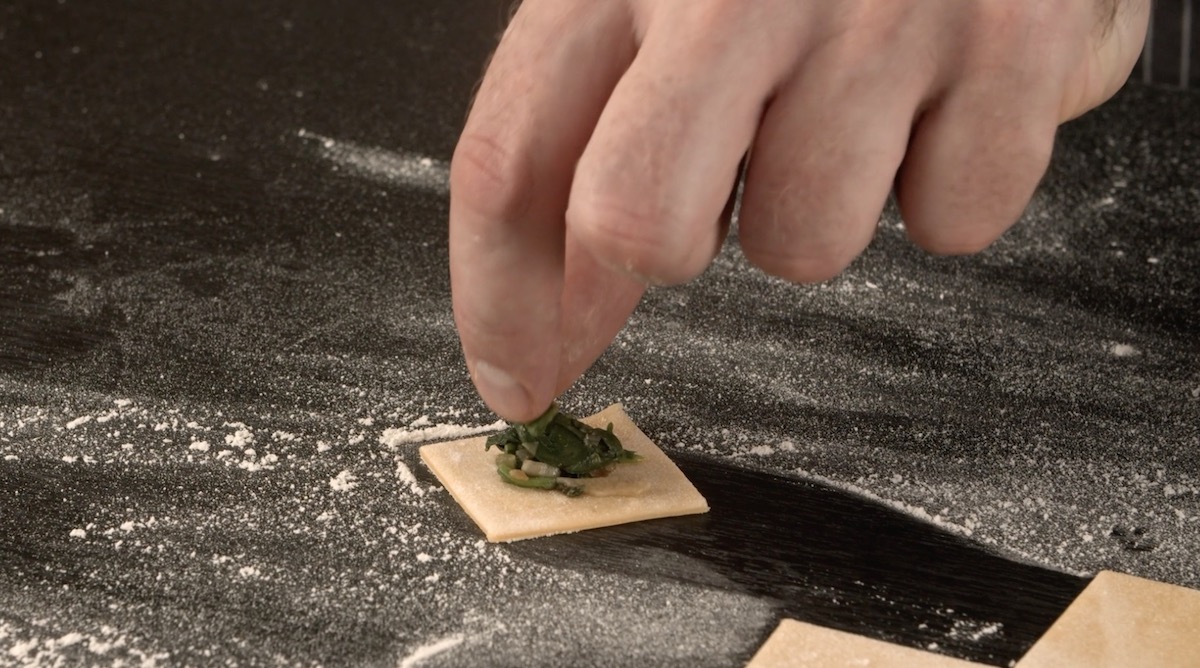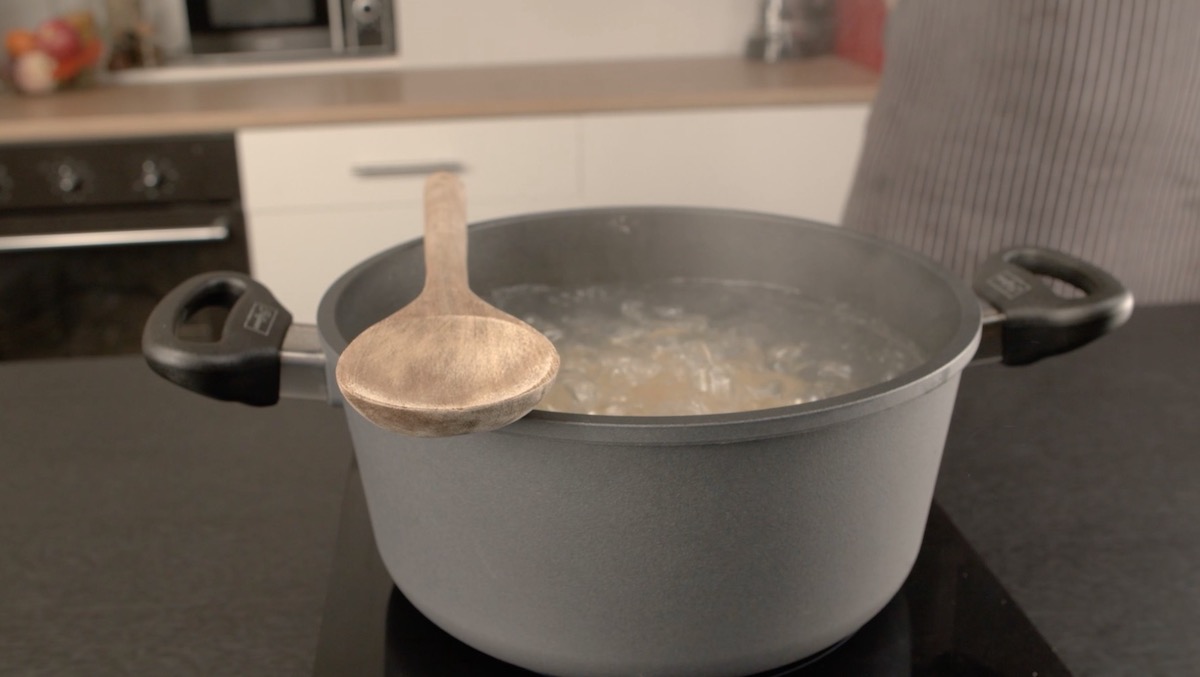Making pasta from scratch might sound complicated, but it’s actually incredibly fun and easy! Believe it or not, you can make tortellini, farfalle, almost any other type of pasta you can think of from a simple 3-ingredient dough. You also don’t need to use any fancy pasta-making equipment or machines. We’re going to show you how to make the perfect pasta dough from scratch, and then show you how to use it! Now you’ll be able to make 7 different types of delicious pasta, right at home!
Homemade Pasta Dough
You’ll Need:
- 3 cups flour
- 1 egg + 5 egg yolks
- ⅓ cup water
Heres’s How:
0.1 Heap the flour into a pile on a clean work surface and form a large well in the center using your hands. Add the eggs and water to the center of the well and start mixing them with a fork. Gradually start incorporating the flour, being careful not to let the eggs spill out of the well. Once the flour is incorporated and a smooth dough has started to form, set a timer for 7–8 minutes and continue kneading by hand. Kneading is what develops the gluten that makes the dough smooth and gives it its elasticity. If your dough feels too sticky, add some more flour. If it feels too dry, beat an egg mixed with some lukewarm water, then spread the egg wash evenly over the dough to make it moist again.

0.2 You’ll know that your dough is read by lightly pressing your hand into it. If the dough bounces back, then enough gluten has developed and you can move on to the next step! Wrap the dough in plastic wrap and refrigerate for 30–60 minutes. Once it has chilled, divide it into smaller sections and wrap them up individually. This makes the dough easier to work with and prevents it from drying out. Now it’s time to start making the pasta!

1. Garganelli
You’ll Need:
- 2 pieces of twine
- wooden cutting board
- wooden skewers
Here’s How:
1.1 Garganelli is a type of pasta you can make really easily with things you already have in your kitchen. Lay 2 pieces of twine on your work surface and place a wooden cutting board on top. Cover the board with wooden skewers positioned horizontally and tie the 2 ends of each piece of twine together. Now you have a pasta board that’s perfect for making garganelli!

1.2 Roll out the dough and cut it into small rectangles. Dust flour on your pasta board, then place 1 of the pieces of dough on it. Use a chopstick or wooden skewer to carefully roll and stretch the piece of dough over the pasta board so that it takes on the texture of the grooves in the board. Roll back the chopstick slowly, and you’ve made garganelli!

2. Farfalle
You’ll Need:
- fork
- empty picture frame
- new pair of tights
Here’s How:
2.1 Farfalle super easy to make, plus it looks gorgeous! Roll out the dough until it’s very thin and cut it into small rectangles using a knife or pizza cutter. Use a fork to carefully press divots into the sides of the dough.

2.2 To create farfalle’s classic bowtie shape, squeeze the center of the rectangular piece of dough between your index finger and thumb. To dry the farfalle, stretch a new pair of tights over an empty picture frame, place the farfalle on top, and voilà – your very own pasta drying rack!

3. Castellane
You’ll Need:
- tape
- toothpicks
Here’s How:
3.1 Roll the dough into a log about 1 inch in diameter and cut it into small segments.

3.2 Lay some toothpicks next to each other and tape them together at one end.

3.3 Slowly roll the pieces of dough over the toothpicks so that they take on a rippled texture, and you’ve made some castellane!

4. Orecchiette
You’ll Need:
- butter knife
4.1 Orecchiette is a type of pasta that’s shaped like little ears, and it’s an absolute classic! Roll the dough into a log that’s about 1 inch in diameter. Using a butter knife, cut out pieces that are about ½ to ¾ of an inch thick. Place the butter knife on a piece of dough, press down, and slowly pull it towards you.

4.2 The tension causes the dough to curl up into the shape of a small ear. If at first you don’t succeed, try, try again! You’ll get there!

5–6. Tagliatelle & Pappardelle
5.1 Roll out the dough into one long, thin section. Sometimes it can be difficult to keep the dough even while making it thin enough, so we’re going to use a little trick. Fold the upper ⅓ of the dough over the lower part. Continue rolling it out using this same technique. This will make the thickness of the pasta much more consistent. Roll the dough out until it’s thin enough to see your hand through it.

5.2 Dust the rolled out dough with flour to prevent it from sticking to itself. Carefully roll up the dough up loosely and cut even segments out of the roll. Unravel each segment and your homemade tagliatelle is ready! If you cut the dough into slightly thicker segments, you’ve made pappardelle!

7. Tortellini
7.1 To make tortellini, roll out the dough and cut it into 1½ by 1½-inch squares. Prepare some filling ahead of time (we used a simple spinach, onion, and garlic filling, but the flavor is completely up to you) and place some of it in the center of each square of dough.

7.2 Fold one of the corners over to meet the opposite one, then carefully push out any excess air. If the edges won’t stay put, you can use a little bit of water to help them stick together.

7.3 Once everything is nice and sealed, connect the opposite corners to one another in the shape of a small crown. Now you’ve made tortellini!

Cooking the Pasta
Make sure your pasta doesn’t stick together when you put it in boiling water. For every 3 oz of pasta, you need a big pinch of salt and 4 cups of water. A lot of people might try to add olive oil to the water at this point, but that isn’t necessary. Oil floats, but the pasta sinks. The two never interact, so adding it is pointless. If you’re afraid that water might boil over, you can just put a wooden spoon on top of the pot. It prevents foam from bubbling up, and the water will stay in the pot!

Once the pasta is al dente, strain it in a colander. Be careful, because running your pasta under cold water will shock it, so just toss it a few times to get off any excess water. Now all that’s left to do is to add your favorite sauce and enjoy!

Making pasta from scratch? No problem! Have fun making your own garganelli, farfalle, castellane, orecchiette, tagliatelle, pappardelle, or tortellini – and don’t forget to enjoy! Buon appetito!

